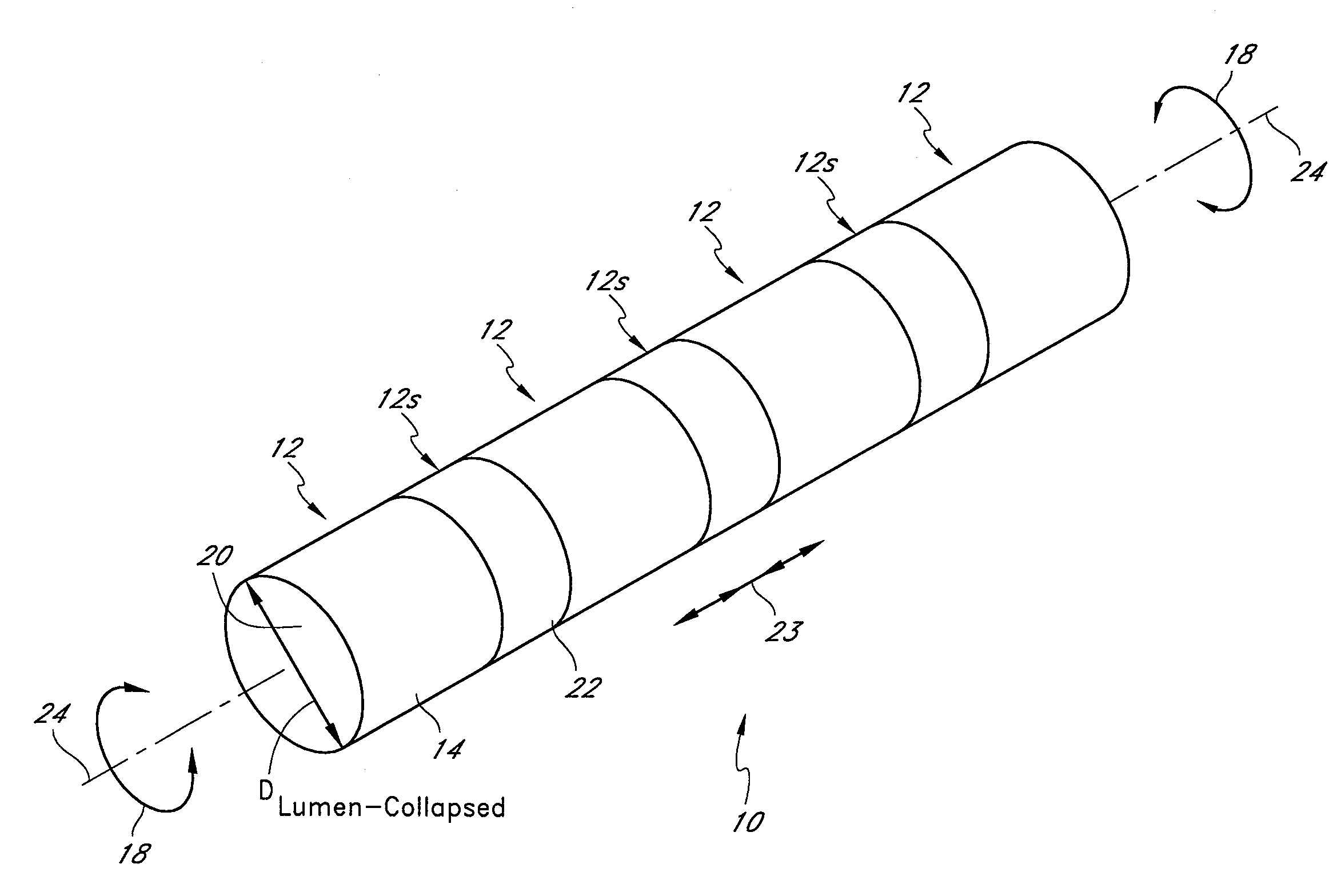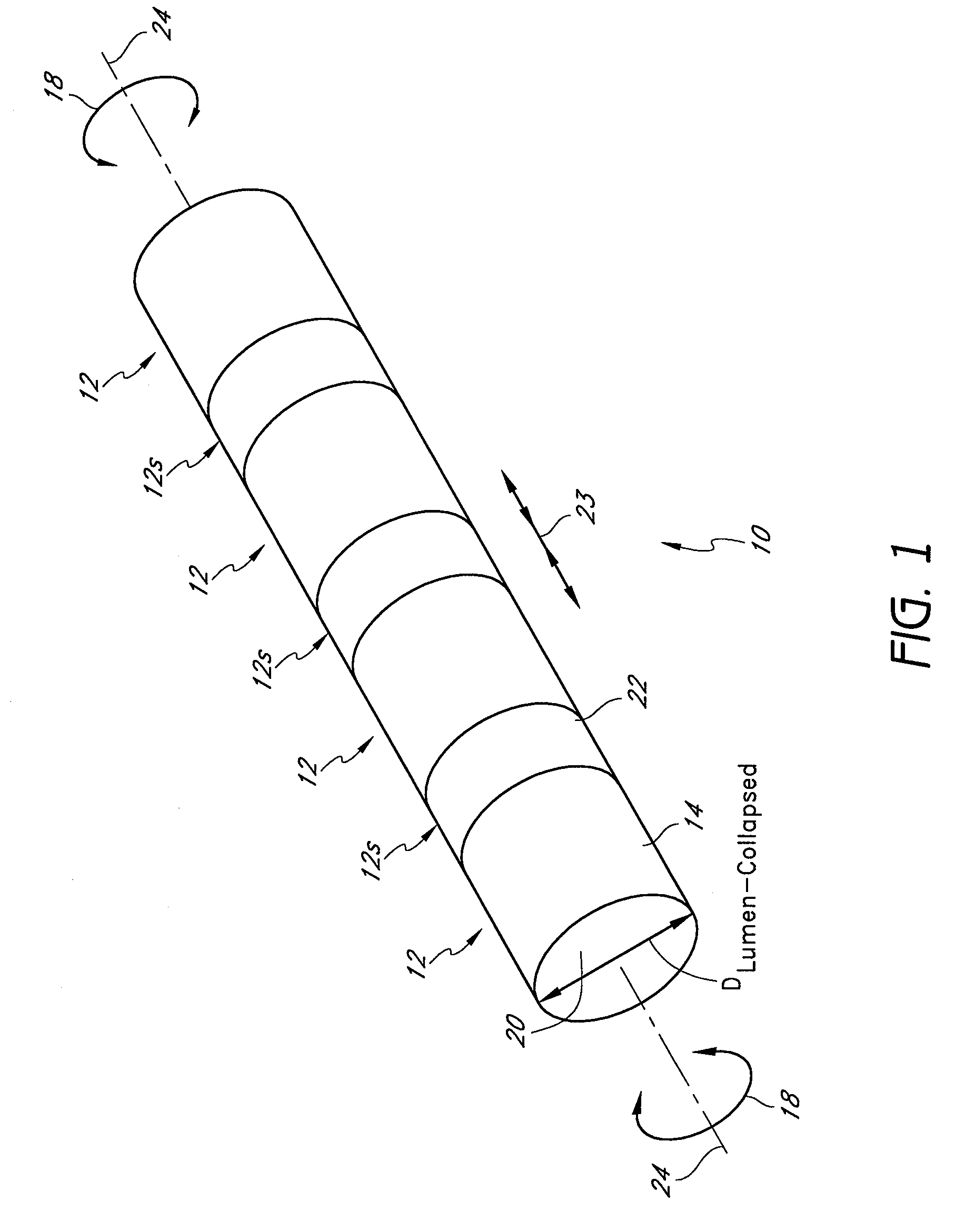Circumferentially nested expandable device
a technology of expandable devices and circumferential nested, which is applied in the field of expandable medical implants, can solve the problems of dilated vessel stenosis, greater or lesser than the ideal amount of material to be concentrated, and wire limitations
- Summary
- Abstract
- Description
- Claims
- Application Information
AI Technical Summary
Benefits of technology
Problems solved by technology
Method used
Image
Examples
Embodiment Construction
[0105]The preferred embodiments described herein relate generally to expandable medical implants for maintaining support of a body lumen and, in particular, to a diametrically expandable, rotary vascular device for enlarging an occluded portion of a vessel.
[0106]While the description sets forth various embodiments in specific detail, it will be appreciated that the description is illustrative only and should not be construed in any way as limiting the same. Furthermore, various applications of the embodiments, and modifications thereto, which can occur to those who are skilled in the art, are also encompassed by the general concepts described herein.
[0107]The term “stent” is used herein to designate embodiments for placement in (1) vascular body lumens (i.e., arteries and / or veins) such as coronary vessels, neurovascular vessels and peripheral vessels for instance renal, iliac, femoral, popliteal, subclavian and carotid; and in (2) nonvascular body lumens such as those treated curre...
PUM
 Login to View More
Login to View More Abstract
Description
Claims
Application Information
 Login to View More
Login to View More - R&D
- Intellectual Property
- Life Sciences
- Materials
- Tech Scout
- Unparalleled Data Quality
- Higher Quality Content
- 60% Fewer Hallucinations
Browse by: Latest US Patents, China's latest patents, Technical Efficacy Thesaurus, Application Domain, Technology Topic, Popular Technical Reports.
© 2025 PatSnap. All rights reserved.Legal|Privacy policy|Modern Slavery Act Transparency Statement|Sitemap|About US| Contact US: help@patsnap.com



